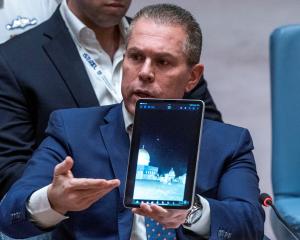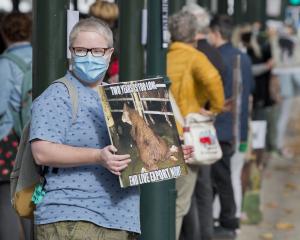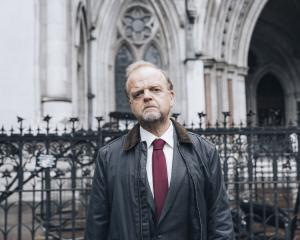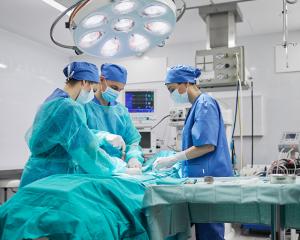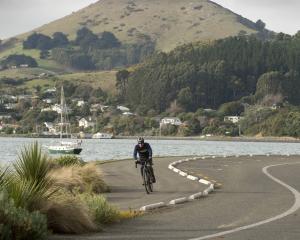
Benefits of keeping our hospital rebuild in the central business district include synergies with the medical school and the desire of some hospital visitors to access shops and facilities nearby. More generally we like what we are familiar with, with some of us fearing change.
Change is inevitable, however, since hospitals have become increasingly technological and new hospital design can look quite different from our current concrete high-rise. New medical technology, better access and a need for restive ''human spaces'' mean a differently designed hospital can serve the whole Southern region better.
The premature Dunedin City Council decision to demand a CBD rebuild was unfortunately made without any staff report or information on modern hospital design. It was forcibly moved by former Labour MP and councillor David Benson-Pope with a polarising tirade against the Government, accusing Treasury of past ''lunatic suggestions'', and saying ''Government makes stupid decisions based on stupid Treasury advice''.
Mayor Dave Cull accused Treasury of going for ''what is the cheapest option'', claiming ''saving $2million to $3million on land costs would be soon swallowed up in extra transport costs'', and that rebuilding in the central city was a ''complete no-brainer''.
Only three councillors voted against, but there would have been at least four against if we had known that a $10,000-plus election-style leaflet campaign was planned, playing party politics. Cr Benson-Pope inappropriately goaded one naysayer about his National Party connections, and falsely branded the three councillors (including me) who voted against as being ''Tories'', even though it is public knowledge I voted for Labour's David Clark last election.
Many modern hospital designs call for a large area of perhaps 10ha allowing low-rise buildings with access to restive outdoor areas, easy close parking, and a safer large all-weather helicopter landing area. These modern hospital desirables are not possible on the current site, even with the addition of a nearby block.
Mayor Dave Cull's $2 million to $3 million estimate of CBD land costs is beyond optimistic, since, for example, much cheaper stadium land was budgeted at $15 million but finally cost more than $30 million. Prime Minister Bill English correctly highlighted land cost for site consideration.
As well as upsetting Government and Treasury leaders, the DCC hospital campaign will drive up the price of pricey CBD land, if there are no other options.
The ''Save Our Services'' part of the campaign misleads, since the Government and Southern Partnership Group public statements have already assured us all current services will be retained.
As for ''Saving Our Site'', it is unlikely a modern hospital can be built on the current site while remaining operational throughout the rebuild. Auckland's Starship Hospital is not in the CBD and neither are Wellington or Christchurch hospitals.
Even if our existing ward block is stable enough to rebuild, it lacks the height between floors necessary for modern services ducting, and is arranged for shared rooms when private rooms have real advantages.
The 2015 Harvard Business Review's ''Better Healing from Better Hospital Design'' stated: ''When one of two McGill University hospitals in the Montreal region of Canada redesigned its ICU from shared to private rooms, the rate of bacterial infection decreased by more than 50%. The new ICU design also decreased the length of stay by 10% . . . When hospitals provide easy access to nature, patients, employees and family members can all enjoy the benefit it provides, including reduced stress, reduced blood pressure, reduced pain and increased pain tolerance, faster recovery times, and, simply, pleasant escape from stressful situations.''
Two sites already owned by the Government include Wakari Hospital, and Hillside Workshops. They both offer enough space for new hospital design, better parking, and quieter cleaner restive ''human spaces'' in a park-like setting.
Neither site is far from the suggested CBD site of Cadbury. My timed drives from Cadbury's car park took three minutes to the medical school, five minutes to Hillside and seven minutes to Wakari.
Hillside should at least be investigated. It is most easily accessible, next to a major shopping area, large, level, and elevated enough to avoid flooding - even when DCC pump screens and mud-tanks were blocked.
A new Hillside hospital would boost South Dunedin development more than detract from central city businesses that already have the university, polytechnic, and dental school, all needing more space and parking for building expansions totalling more than $300 million.
Building a modern hospital is much more complex than building a modern hotel, which also takes years to design. We should celebrate our unrivalled wealth of medical specialists and teachers and aspire to a better new hospital, not just saving what we have.
Decision-makers must wait until all expert information is gathered to know what is the best kind of hospital for our future, and then pull together for the best result in the best place.
-Lee Vandervis is one of three Dunedin city councillors who voted against the council's SOS campaign to retain a central site for Dunedin Hospital.
Comments
Adding Neville Street east and Wilkie Road (relocating existing scrap metallers), and making hospital entrance/exit along to KE Street, Kensington. You cannot (should not?) have access from Hillside Road.
Advising quietism around government planning is also a political position.

